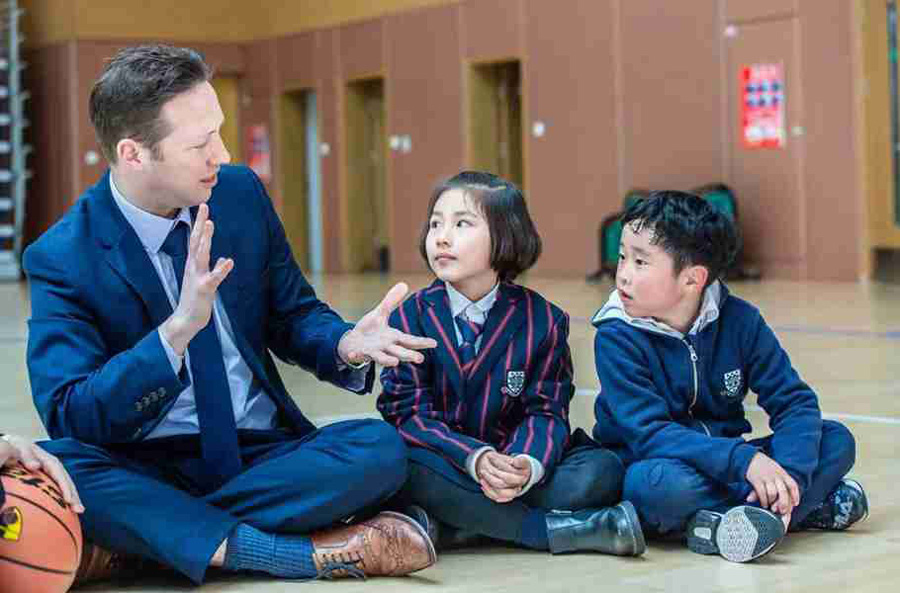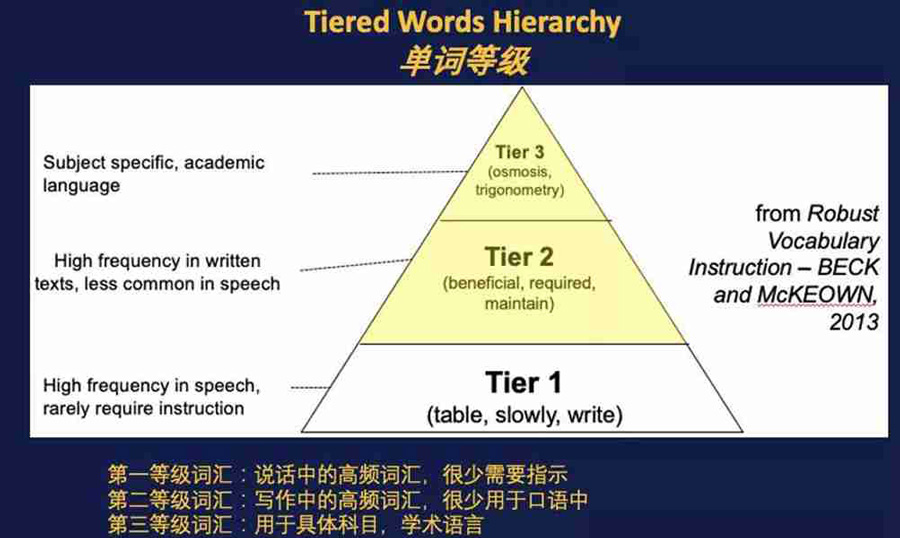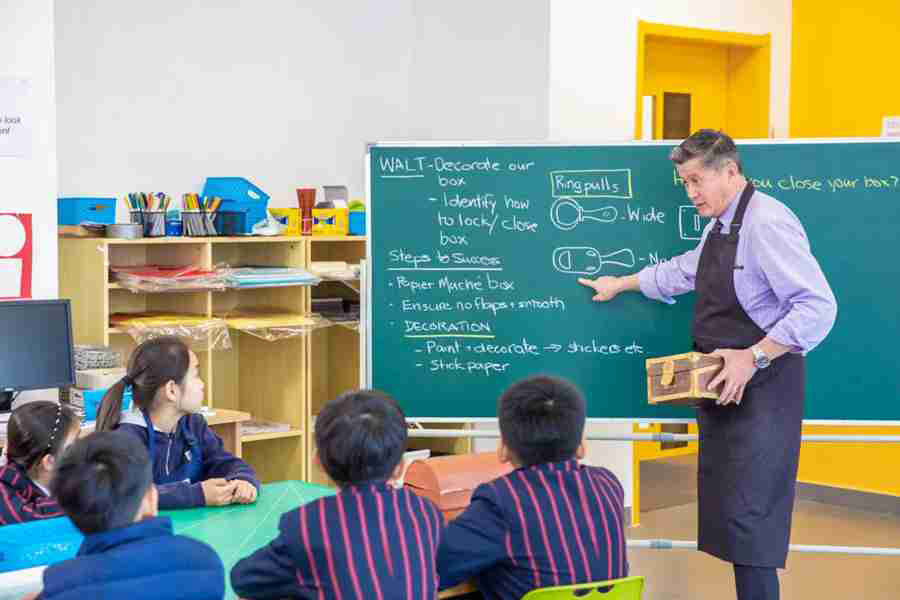Read Write Inc Online Learing
At HD Qingdao, one of our core aims is to develop a curriculum that enables children to become fluent in English (reading, writing, speaking and listening). In a bilingual school, where English instruction only makes up 50% of the curriculum time, this presents several challenges. This means that our approach to teaching English needs to be highly efficient and evidence informed.

The Three Tiers of English Vocabulary
A helpful language model that we use at the school to help direct our teaching is Beck, McKeown & Kucan’s (2013) tiered model of English vocabulary.
This model divides words into three tiers. The first tier is made up of spoken words. In a native speaking context little attention needs to be given to spoken words as they are generally picked up through everyday speaking practice that takes place in the home, in the playground, in the classroom and in the wider world. In a bilingual context, this becomes more challenging as typically children will revert to their home language in the playground and in the home because it is the language that they are most comfortable with.

The second tier is made up of those words that are common in written language but uncommon in spoken language. This is the tier that presents the most challenge to students as often this tier of vocabulary is not specifically taught in schools as it is expected that children will pick up this vocabulary by reading widely. This presents a problem for those students who, for one reason or another, do not read regularly or who are not exposed to English books and stories at home.
The third tier is made up of subject specific technical vocabulary that teachers generally focus on during relevant context specific teaching. For example, a teacher looking at the life cycle of a plant in Science would likely introduce the word ‘photosynthesis’ and explain the process in detail through practical activities.

The Challenges related to Bilingual Education
One of the challenges of teaching in a bilingual school is that all these different tiers require focus. In a native speaking context children would naturally develop tier one vocabulary through their daily interactions, but for children who are learning English as a second language in an international context, even this basic level of vocabulary needs to be planned in and taught as part of an effective English curriculum. The good news is that spoken language relies on a relatively limited number of words. Around 2000 words make up 80% of the spoken English that a native speaker will use during their daily life (Quigley 2018).
Another challenge that bilingual learners face is that they also need to acquire a large enough word hoard of tier two words to be able to cope with the increasing complexity of academic texts as they move into the later stages of their Primary Education and on into the middle school years.
Bedrock Learning
As vocabulary development of tier two words is absolutely essential to teaching bilingual students, we have been incorporating Bedrock Vocabulary Learning into our provision at HD Qingdao school.

We use the programme with our students who have already completed our Read Write Inc phonics programme. To access the required level of reading for the programme, it is important that our students have secure word recognition skills.
Bedrock Programme Structure
The programme is divided into blocks and starts at Block 3 and goes up to Block 11. Each Block is made up of a series of Topics and lasts a complete academic year. For example, Block 3 is made up of the Topics listed below:
Around the Zoo
Galileo!
The Hot Air Balloon
A Dangerous Race
Space Pirates
Planet Earth
Robinson Crusoe
The Girl in the Tower
Circus Tricks
Creatures of the Sea!
Each of these topics consists of a Pre-test, 6 online lessons and then a post-test.
Pre Test
The pretest consists of a multiple choice quiz based on the vocabulary taught as part of the topic. Short samples of text are provided and the student has to select the correct meaning of each word presented based on the provided choices. Once the quiz is completed the programme provides each student with a list of the words that they currently know and need to learn as part of the topic.
Completing a Topic
The words that the students learn as part of the Bedrock programme have all been identified by the developers as being tier two words. This means that the programme is a meaningful tool for teaching and reinforcing the essential vocabulary that students require for academic success. During each online lesson the student is provided with a short section of text that presents 3 key words to be learned in context. The text is also read out loud to the student so that they develop the correct pronunciation of the words.
An explanation is then provided for each of the 3 key words and the student moves on to a series of activities that reinforce their understanding of these words. Finally, at the end of the 20 minute lesson, the student needs to use each word in a sentence of their own or provide their own explanation of the meaning of each word.
As well as learning 3 new words in each lesson, students are also quizzed on previously learnt words so that their understanding is constantly being reinforced.
Post Test
At the end of the 6 lessons a post test is completed and the programme provides detailed information on the progress that each student has made over the course of the topic. The student’s current word list is adapted to reflect their performance in the post test.
Moving forward…
The Bedrock Vocabulary programme is becoming an essential resource for our students. Bedrock Learning specifically teaches the students the tier two vocabulary that is essential to developing their levels of English and ensuring academic success in the later stages of their education. It does this through simple and engaging online lessons that can be completed in school, or as part of homework, within 20 minutes.
In our context, we feel that in school we need to maximise the curriculum time with high quality, targeted instruction. Bedrock Vocabulary provides a key opportunity for our students to practise and develop their English vocabulary at home.
References:
Beck et al, (2013) Brining Words to Life: Robust Vocabulary Instruction. Guildford Press
Quigley,A (2018) Closing the Vocabulary Gap, Routledge
Education Endowment Foundation (2017) Improving Literacy in Key Stage 2, London: Education Endowment Foundation

